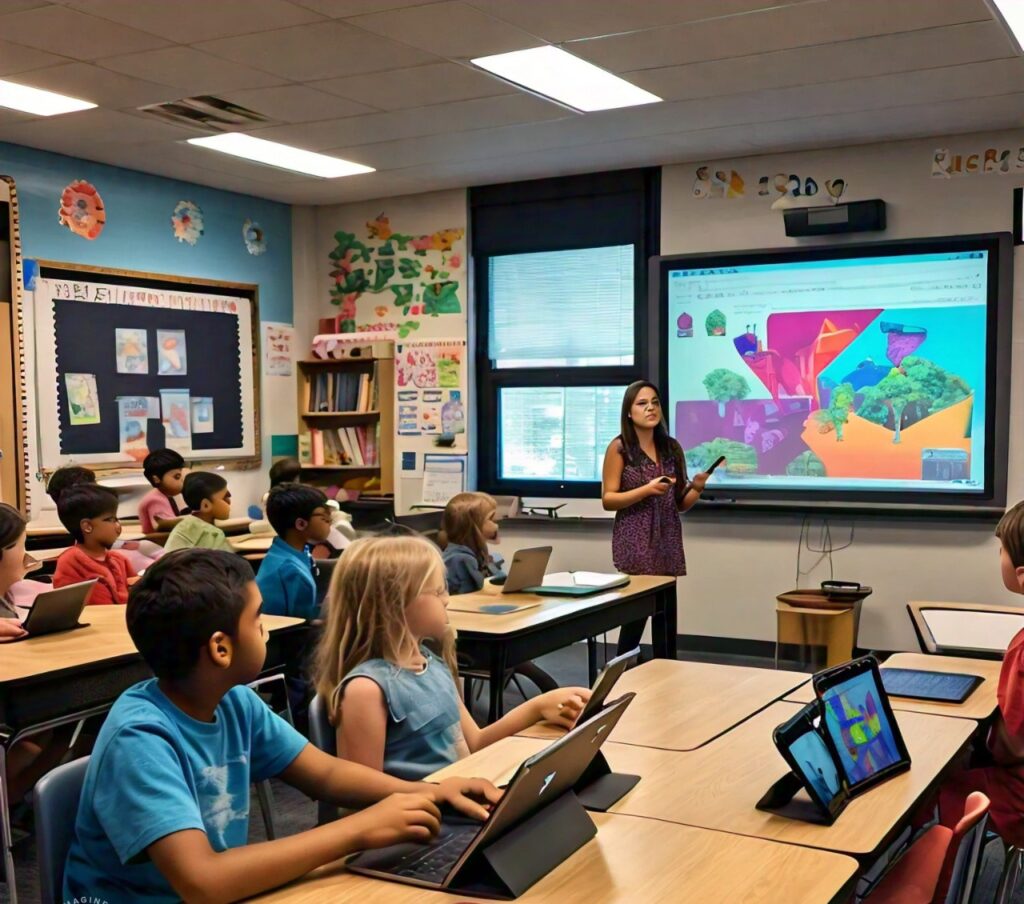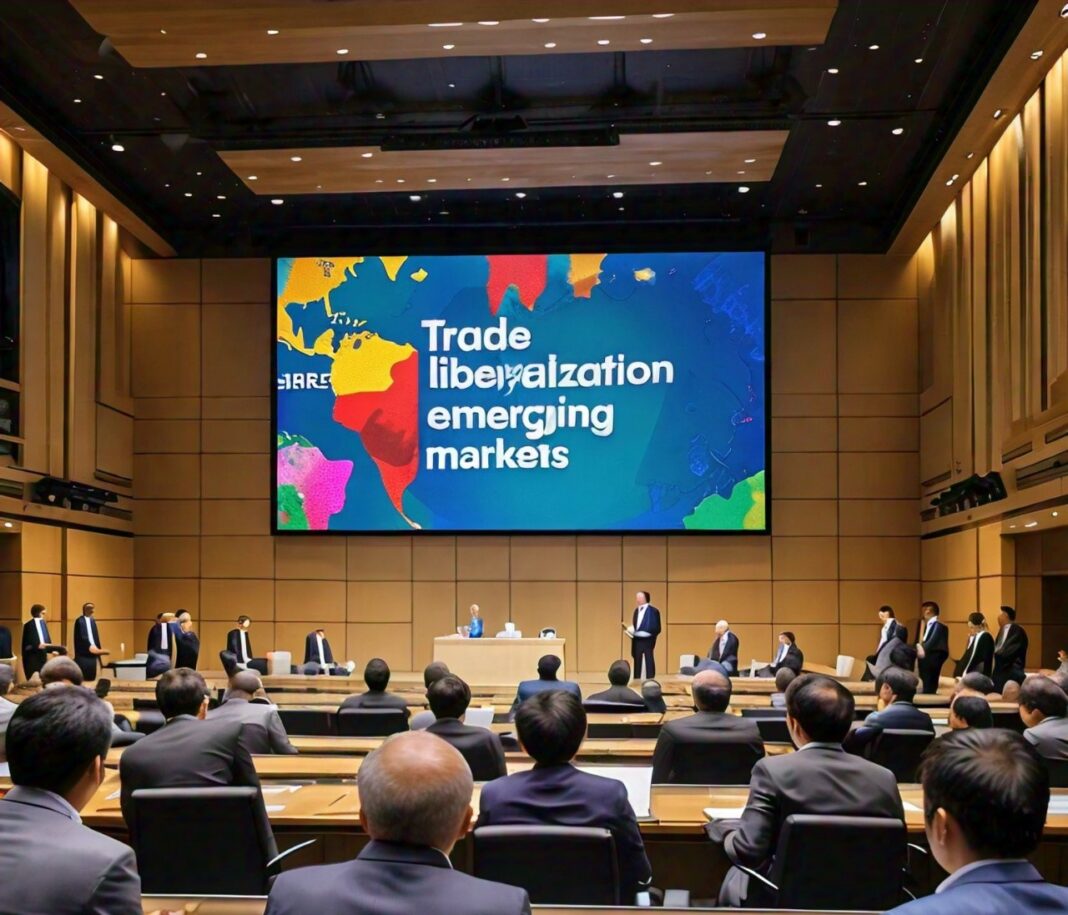Education emerging markets represent a dynamic and rapidly evolving segment of the global economy, characterized by significant growth potential and increasing participation in international markets. These regions are often defined by their transition from developing to developed status, featuring unique social, economic, and educational challenges and opportunities.
Education plays a pivotal role in this transition, acting as a catalyst for economic development. As countries in emerging markets enhance their educational systems, they not only improve individual outcomes but also foster broader societal benefits. Access to quality education equips individuals with the skills necessary to participate in the workforce, drives innovation, and ultimately contributes to economic growth.
In recent years, there has been a noticeable shift in educational trends within these markets. This includes increased investment in educational infrastructure, the adoption of technology-driven learning solutions, and a focus on improving educational quality and accessibility. Policymakers, educators, and administrators are increasingly recognizing that these improvements are not merely beneficial but essential for sustainable economic development.
As this article will explore, understanding the current trends in education within emerging markets is critical for educators and administrators seeking to make informed decisions and foster positive changes. By analyzing how educational advancements are intertwined with economic development, we can gain insights into effective strategies and best practices that can be adapted to diverse contexts.
Through this exploration, we aim to provide a comprehensive overview of the educational landscape in emerging markets, highlighting both the progress made and the challenges that remain. This understanding will empower educators and administrators to contribute meaningfully to the ongoing dialogue on education and economic development in these vital regions.
Current Trends in Education in Emerging Markets
Access to Education
Access to education in emerging markets has significantly improved over the past decade. Enrollment rates have surged thanks to initiatives aimed at reducing barriers, such as poverty, geographical isolation, and cultural norms that may discourage education, especially for girls.
For instance, countries like India and Nigeria have implemented government policies that provide free primary education, resulting in millions more children attending school. According to UNICEF, enrollment in primary education in low-income countries rose from 83% in 2000 to over 90% in 2019 (UNICEF).
Technology has also played a critical role in expanding access. The proliferation of smartphones and internet connectivity has enabled innovative e-learning platforms, allowing students in remote areas to participate in quality education. Initiatives like the E-Learning Africa project provide resources and training for teachers and students, demonstrating the potential of technology to bridge educational gaps.
Quality of Education
While access to education has improved, enhancing the quality of education remains a pressing challenge. Many emerging markets are focusing on curriculum reforms to ensure that education is relevant to the needs of the modern workforce. Countries like Kenya and South Africa have adopted competency-based curricula that emphasize critical thinking and problem-solving skills.
Teacher training programs are also being prioritized. For example, the Teach for All initiative has expanded into various emerging markets, training educators to improve teaching methodologies and student engagement. Research indicates that effective teacher training significantly impacts student outcomes (World Bank).
Innovative Teaching Methods
Emerging markets are increasingly adopting innovative teaching methods to enhance student engagement and learning outcomes. Project-based learning and experiential education are gaining traction, encouraging students to apply knowledge in real-world contexts.
For instance, in Brazil, schools are integrating local community projects into their curricula, allowing students to learn while contributing to their communities. This approach not only fosters civic responsibility but also helps students develop practical skills.
Moreover, the incorporation of STEM education is becoming a priority in several emerging markets. Countries like Vietnam have invested in STEM curricula to prepare students for careers in technology and engineering, aligning education with market needs.

Policy Reforms
Recent policy reforms in emerging markets reflect a commitment to improving education systems. Governments are increasingly recognizing the importance of education as a driver of economic development and social equity.
For example, Rwanda’s education sector has undergone significant reforms since the 2000s, focusing on improving quality and access through initiatives like the Nine-Year Basic Education Program. This program has led to increased enrollment and improved student performance in national assessments.
Furthermore, international organizations, such as the World Bank and UNESCO, are providing technical assistance and funding to support these reforms. Their reports often highlight successful case studies and offer recommendations for scaling effective practices across different contexts.
In summary, the landscape of education in emerging markets is marked by significant strides in access, quality, teaching methodologies, and policy reforms. As these trends continue to evolve, they present both opportunities and challenges for educators and administrators aiming to enhance educational outcomes and contribute to economic development.
Also Read: The Impact of Political Risk on Investment in Emerging Markets
The Role of Technology
Digital Literacy
As emerging markets strive to improve educational outcomes, digital literacy has emerged as a critical component of the curriculum. In a world increasingly driven by technology, equipping students with digital skills is essential for their future success and the economic competitiveness of their countries.
Countries like Malaysia and Kenya have launched initiatives to promote digital literacy from a young age. For instance, Kenya’s Digital Literacy Programme aims to integrate ICT (Information and Communication Technology) in primary schools, providing students with access to computers and training in digital skills (Kenya Ministry of Education). This initiative is pivotal in preparing students for the digital economy, fostering a workforce that can adapt to technological advancements.
EdTech Solutions
The rise of education technology (EdTech) has transformed how education is delivered in emerging markets. Innovative platforms and applications are emerging, catering to diverse educational needs and contexts.
One notable example is Khan Academy, which offers free online courses and resources. This platform has gained popularity in countries like India, where it is used to supplement classroom learning and provide additional resources for students. Similarly, BRAC, a Bangladesh-based NGO, has implemented mobile learning solutions that allow students in rural areas to access educational content on their phones (BRAC).
Moreover, local startups such as Andela and Moringa School are addressing the skills gap in technology by providing coding bootcamps and tech training, focusing on preparing students for jobs in the tech sector. These initiatives not only enhance educational access but also support economic growth by developing a skilled workforce.
Distance Learning
The COVID-19 pandemic accelerated the adoption of distance learning in emerging markets, prompting educators to explore online teaching methods. While this shift presented challenges, it also highlighted the potential for remote education to reach underserved populations.
In countries like South Africa, initiatives like the Department of Basic Education’s online learning platform have provided resources for students and teachers during school closures. Despite connectivity issues in some regions, many schools have embraced hybrid models that combine in-person and online learning, offering flexibility and broader access.
However, the shift to distance learning also exposed significant disparities in access to technology and the internet. Efforts to address these gaps are ongoing, with governments and organizations working to improve infrastructure and provide devices to students in need. For instance, UNESCO has emphasized the importance of equitable access to technology in its reports on education during the pandemic (UNESCO).
In summary, technology plays a transformative role in education within emerging markets, enhancing digital literacy, expanding access through EdTech solutions, and adapting to distance learning needs. As these trends continue to evolve, they present both opportunities and challenges for educators and administrators seeking to harness technology for educational improvement.
Economic Impacts of Educational Improvements
Workforce Development
Education is a crucial driver of workforce development in emerging markets. By equipping individuals with the necessary skills and knowledge, improved education systems contribute to creating a competent labor force capable of meeting the demands of a rapidly changing global economy.
For example, countries like Ethiopia and Bangladesh have focused on vocational training programs that align with local industry needs. These programs aim to enhance technical skills among youth, preparing them for employment in sectors such as manufacturing and agriculture. Research shows that such vocational education initiatives can significantly reduce youth unemployment rates and increase productivity (World Bank).
In addition, partnerships between educational institutions and businesses are on the rise. Collaborative initiatives, such as internships and apprenticeships, bridge the gap between education and employment, allowing students to gain practical experience while still in school. The Partnership for 21st Century Learning emphasizes the importance of these collaborations in developing a skilled workforce ready for the demands of the modern economy.

Entrepreneurship and Innovation
Education is also linked to increased entrepreneurship and innovation in emerging markets. A well-educated population is more likely to engage in entrepreneurial activities, driving economic growth and job creation.
Countries like Nigeria and India have witnessed a surge in startups driven by young entrepreneurs equipped with skills learned through improved educational programs. Educational institutions are increasingly incorporating entrepreneurship curricula, fostering a culture of innovation. For instance, the Stanford Seed Transformation Program in Africa provides training and resources to entrepreneurs, highlighting the role of education in developing successful business leaders (Stanford Graduate School of Business).
Moreover, access to technology and online resources has further empowered aspiring entrepreneurs. Platforms like Y Combinator and Techstars are offering mentorship and funding opportunities to startups in emerging markets, demonstrating how education and innovation can intersect to drive economic development.
Social Mobility
Education is a powerful tool for social mobility, particularly in emerging markets where socio-economic disparities often hinder access to opportunities. By improving educational access and quality, countries can help break the cycle of poverty and promote equity.
For example, programs aimed at increasing girls’ education in countries like Afghanistan and Malawi have shown significant impacts on social mobility. Educated women are more likely to participate in the workforce, contribute to household incomes, and invest in the education of their children, thus creating a positive feedback loop. The Global Partnership for Education highlights the importance of girls’ education in achieving broader socio-economic goals (Global Partnership for Education).
Furthermore, research indicates that higher education levels correlate with improved health outcomes, lower crime rates, and increased civic participation. As education systems in emerging markets continue to expand and improve, the potential for social mobility becomes increasingly achievable, fostering a more equitable society.
In summary, the economic impacts of educational improvements in emerging markets are profound, contributing to workforce development, fostering entrepreneurship and innovation, and promoting social mobility. As these trends continue to evolve, the role of education as a driver of economic growth and social equity becomes ever more critical.
Challenges Facing Education in Emerging Markets
Funding and Resources
One of the most significant challenges facing education in emerging markets is inadequate funding and resource allocation. Many countries struggle to meet the financial demands of improving educational infrastructure, teacher salaries, and learning materials. According to UNESCO, around 260 million children are out of school globally, with many of these cases found in low-income countries where education budgets are severely constrained (UNESCO).
Emerging market governments often allocate limited resources to education due to competing priorities such as healthcare and infrastructure. Innovative funding models, such as public-private partnerships, are gaining traction to address these financial shortfalls. For example, in Ghana, the government has collaborated with private organizations to implement school infrastructure projects, showcasing how partnerships can enhance funding and resource availability (The World Bank).
Infrastructure Issues
In many emerging markets, inadequate infrastructure remains a major barrier to quality education. Schools often lack basic facilities, such as clean water, electricity, and proper sanitation, which can hinder student attendance and learning outcomes. For instance, in rural areas of India and sub-Saharan Africa, many schools are not equipped with essential resources, leading to high dropout rates and low academic performance.
Efforts to improve infrastructure are underway in various regions. The Global Partnership for Education is working with countries to strengthen school infrastructure and ensure that all students have access to safe and conducive learning environments (Global Partnership for Education). Additionally, innovative solutions such as mobile classrooms and community learning centers are being explored to reach underserved populations more effectively.
Cultural and Societal Factors
Cultural attitudes toward education significantly influence educational participation and success in emerging markets. In some regions, traditional beliefs and societal norms can discourage families from prioritizing education, particularly for girls. In countries like Afghanistan, cultural practices limit women’s access to education, resulting in lower enrollment rates and educational attainment.
To combat these cultural barriers, community engagement and awareness campaigns are essential. Programs that involve local leaders and parents in promoting the importance of education can help shift societal attitudes. For example, initiatives like the Girl Effect in Ethiopia focus on empowering girls through education while addressing cultural norms that limit their opportunities (Girl Effect).
Gender disparities remain a critical issue. While access to education for girls has improved in many regions, challenges persist, including safety concerns, early marriage, and household responsibilities that prevent girls from attending school. Addressing these issues requires a multi-faceted approach involving policy changes, community support, and targeted interventions.

Policy Recommendations
To enhance educational outcomes in emerging markets, several policy recommendations can be implemented:
Increase Investment in Education:
- Allocate a higher percentage of national budgets to education.
- Explore innovative funding sources, including public-private partnerships.
Focus on Teacher Training:
Implement continuous professional development programs for teachers.
Establish mentorship schemes to support new educators.
- Implement continuous professional development programs for teachers.
- Establish mentorship schemes to support new educators.
Enhance Curriculum Relevance:
- Revise curricula to align with market needs, emphasizing skills like critical thinking and digital literacy.
- Integrate vocational training and soft skills into the education system.
Promote Inclusive Education:
- Develop policies that ensure access for marginalized groups, including girls and students with disabilities.
- Create awareness campaigns to change societal attitudes towards education for all.
Conclusion
As we have explored throughout this article, the relationship between education and economic development in emerging markets is profound and multifaceted. Improved educational systems are not just a pathway to personal advancement; they are essential for fostering a skilled workforce, promoting entrepreneurship, and enhancing social mobility.
As educators and administrators, your engagement in this dialogue is essential. By staying informed about emerging trends and actively participating in initiatives aimed at improving education, you can contribute to meaningful change in your communities and beyond. Whether through advocacy, collaboration, or innovation, your role is pivotal in shaping the future of education in emerging markets.
Together, we can harness the power of education as a catalyst for economic growth and social equity, ensuring that every individual has the opportunity to succeed in a rapidly changing world.






